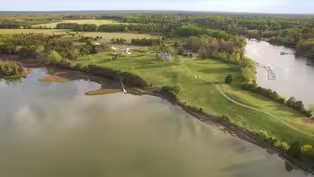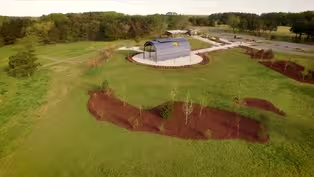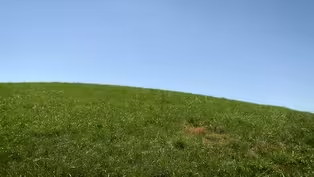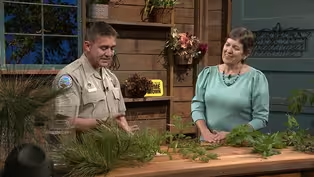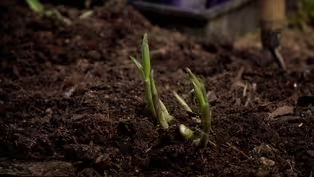Virginia Home Grown
Mine Site Land Management
Clip: Season 23 Episode 2 | 6m 39sVideo has Closed Captions
Overseeing Mine Site Restoration
Will Clear, Acting-Director of the Virginia Department of Energy explains how the state manages mine sites and ensures that the land is restored when excavation is complete. Featured on VHG episode 2302; April 2023.
Problems playing video? | Closed Captioning Feedback
Problems playing video? | Closed Captioning Feedback
Virginia Home Grown is a local public television program presented by VPM
Virginia Home Grown
Mine Site Land Management
Clip: Season 23 Episode 2 | 6m 39sVideo has Closed Captions
Will Clear, Acting-Director of the Virginia Department of Energy explains how the state manages mine sites and ensures that the land is restored when excavation is complete. Featured on VHG episode 2302; April 2023.
Problems playing video? | Closed Captioning Feedback
How to Watch Virginia Home Grown
Virginia Home Grown is available to stream on pbs.org and the free PBS App, available on iPhone, Apple TV, Android TV, Android smartphones, Amazon Fire TV, Amazon Fire Tablet, Roku, Samsung Smart TV, and Vizio.
Providing Support for PBS.org
Learn Moreabout PBS online sponsorshipWell, Will, I'll be honest, nobody has ever brought in a diorama like this before so I'm really intrigued by it.
>>Thank you, yeah.
Our guys did a great job on this.
>>They really did.
It explains things so clearly.
So, you know, you're with the Virginia Department of Energy.
Tell me real briefly what does that department oversee and do?
>>We actually are an agency that's all over the state.
We actually oversee your permit to all the mining activities that occur in the state, but we also do a lot of work on the sort of research on where we go for our energy future in the Commonwealth.
>>Exciting.
That's very exciting.
>>It's very exciting right now since it's dynamically changing a lot.
>>Yes, I could see there's so many things on the table, I'm sure.
>>Right.
>>But some of the things that also need to be addressed is what we have been doing.
And some of that needs to be celebrated and educated, so people know, so typically with a coal mine, like we have a diorama here of, you know, we have a concept or perception of one thing.
But can you explain to us truly the process of the mining operation and then where it lands?
>>Sure, we can walk through this whole process.
And before we get started, I mean you have to start talking about the permit process, right?
This all begins with a very extensive permit process where the plan is filed and also the final reclamation plan, because that's really what we want to get to is what is the reclamation going to be, and ensure that we protect, obviously the water that's coming off of this, or the water that's around this and flows into our rivers, but also get the land back to where it needs to be.
>>That's great, so even before that permit is actually granted they've already got a plan to reclaim the site?
>>That is correct.
That is correct.
>>That's very helpful to know, 'cause I know this is a drastic land change and so they start the shoveling, and where do we go from there?
>>Well, we start at the top here.
If you look at this particular diorama and I'll talk about some of the things as we go down.
If you start at the top of this ridge, for example, and we start taking off the layers you can actually see the coal seams.
That's actually the dark spots here.
>>I see them.
>>And as we take that down we're gonna actually remove the coal and we're gonna first pull off the top soil, so I'd start there, we pull off the top soil.
We'll take that down.
And then ultimately what you can see is we get down to the bottom of this coal seam.
And then we're gonna start bringing back that material.
>>Okay.
>>And reclaiming that what we call a high wall, right?
>>Okay.
>>So we're actually reclaiming that and bringing that back up, and we take it back to usually back to a grade, an original contour to restore the land back to where it was originally.
>>Okay, if it can't get restored, you get as close as possible?
>>That's correct.
That's correct.
Sometimes the material, there's not enough material, but we do our best job to get it back to the, what we call approximate original contour.
>>Because also you have to keep in mind if it's too steep, erosion is just going to take over.
>>We are very concerned about erosion.
We spend a lot of our time ensuring that we don't have erosion and controlling the sediment that comes off of these sites.
>>So what are some of the practices used to control erosion?
>>That's when we go over here and we talk on this side of the diorama.
We have sediment retention ponds.
If you can see at the bottom of this here, we have retention ponds.
So as water will come down, it'll collect there, and sediment will actually deposit in the bottom of that pond, and keep the sediment from flowing to our rivers, and affecting, you know, fish and things in the rivers.
>>So it's intentional to slowly be filled in?
>>It's absolutely intentional, yes.
>>And then moving on as we're going, you know, what type of soil do you put onto the reclaimed site, and what kind of seeding, what type of plant material?
>>What we do is we do encourage the operators to use a native seed to put back, but oftentimes we're really concerned with slope stability and sediment and erosion control, right?
That's our biggest concern.
>>Yes.
>>We want to protect our waters.
So sometimes we use certain seeds that will grow fast.
Right, it may or may not be native species.
>>Like fescues and such?
>>Exactly.
>>Yes.
>>That will actually get it to a point where we don't have that sediment issue.
>>You know, if we can stabilize the slope and anywhere, even in our own yards.
So people who live on a slope, it's so important to stabilize that soil.
So you don't get the runoff.
You don't get the nutrient runoff nor the soil runoff, and then you can move back into sort of introducing, or encouraging the other species to take over.
And that's really important.
>>That is correct.
Yes.
>>Yeah.
Typically, how long, you know, do you manage this site for any period of time, or do you immediately let it go?
>>What we do with an operator is we don't release a permit until we feel like everything is where it needs to be from a stability perspective and vegetation.
So typically what we say is once we start reclamation, active reclamation on a site meaning there's no more coal being taken off a site, it can take up to five years to actually get to a point where we feel comfortable to release the operator from that site.
>>Right so, it's all the soil erosion permits that we get with construction, you know?
It's gotta be able to have support soil, which is the side that I know of.
But even here, you're actually managing the site for five years before you re even say it's okay to move forward.
This is very informative.
Do you come back years later just to double check the site, or?
>>Well, we, obviously we release the site.
We don't necessarily come back unless there are some issues.
We very rarely have any concerns or issues, but we typically don't have to come back, because we know the site is ready to go.
>>Well then I have one question real quick is what happens if the site doesn't meet standards?
How does, you know, the Virginia Department of Energy help with the mining corporation to get them there?
Is there guidance or?
>>We inspect these sites, obviously during the process.
All through the process, we have monthly inspections.
So we're always on site.
We ensure we actually write violations if something is not done, you know, for example, back to here if we're not reclaiming as we mine, then we will write a violation to ensure that we do that.
>>Understandable, well, this is all very important.
And I know the next step after this is to put it into the community to see if we can get agriculture on it and other corporations back onto the site to benefit even the community further.
So I wanna thank you so much for sharing this.
It helped me tremendously.
So I appreciate you being here.
>>Well, thank you for having me, Peggy.
Video has Closed Captions
Clip: S23 Ep2 | 26m 46s | Learn about efforts to protect and restore natural areas in Virginia! (26m 46s)
Video has Closed Captions
Clip: S23 Ep2 | 2m 19s | Conserve water and suppress weeds by using wood chips in the garden. (2m 19s)
Video has Closed Captions
Clip: S23 Ep2 | 7m 11s | Explore Virginia’s first state park dedicated to honoring Native American history. (7m 11s)
Video has Closed Captions
Clip: S23 Ep2 | 7m 57s | Learn about a mining company’s industry-leading environmental stewardship program. (7m 57s)
Video has Closed Captions
Clip: S23 Ep2 | 5m 55s | Learn about native tree species being encouraged to grow at Machicomoco State Park (5m 55s)
Video has Closed Captions
Clip: S23 Ep2 | 3m 7s | Preserve soil on sloped landscapes by planting groundcover. (3m 7s)
Providing Support for PBS.org
Learn Moreabout PBS online sponsorship

- Home and How To

Hit the road in a classic car for a tour through Great Britain with two antiques experts.












Support for PBS provided by:
Virginia Home Grown is a local public television program presented by VPM
